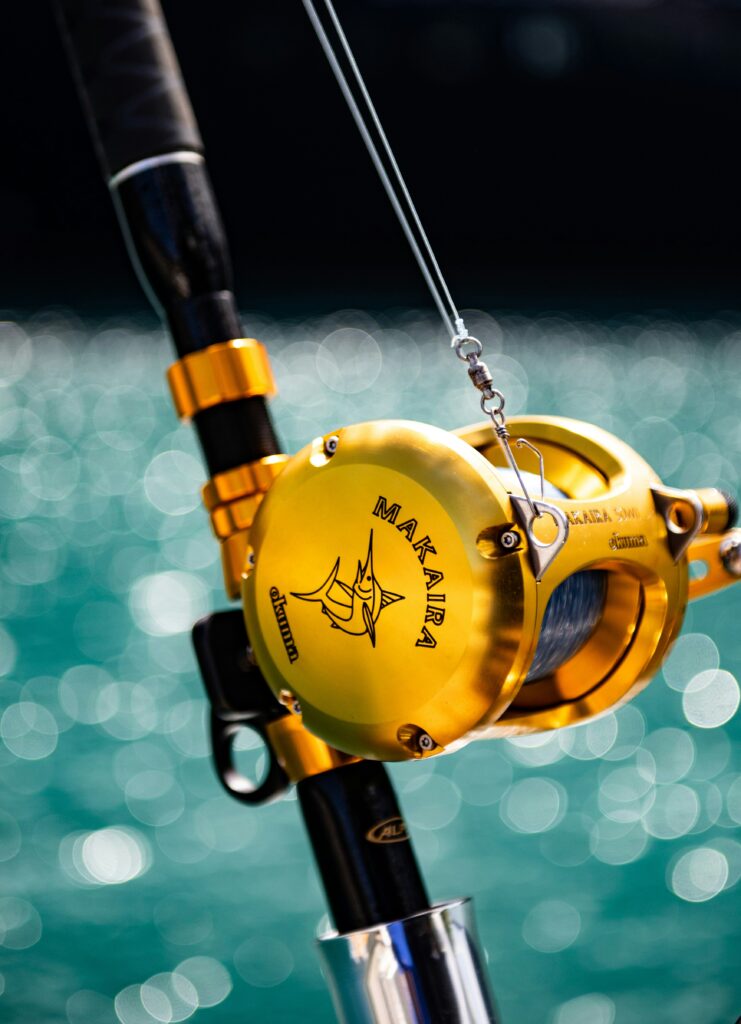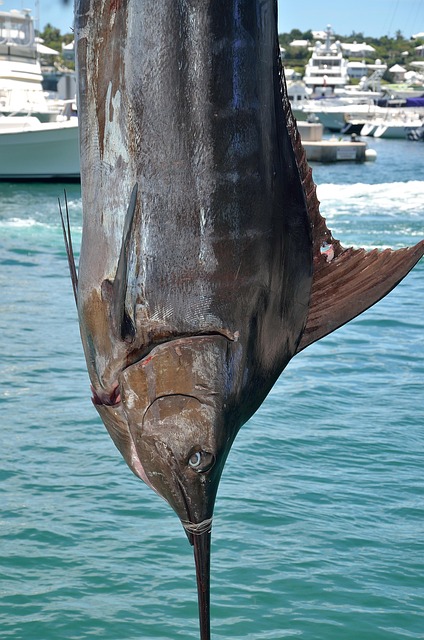Marlin represents one of the ocean’s most magnificent predators and stands as a prized delicacy in cuisines worldwide. This powerful billfish, renowned for its incredible speed and fighting spirit, offers a unique culinary experience that combines exceptional flavor with impressive nutritional benefits. Understanding marlin meat – from its distinctive taste profile to proper preparation techniques – opens doors to extraordinary dining experiences while highlighting important sustainability considerations in modern seafood consumption.

The Marlin Species and Their Characteristics
Four primary marlin species grace our oceans: Blue Marlin, Black Marlin, White Marlin, and Striped Marlin. Each species offers slightly different meat characteristics, though all share the distinctive qualities that make marlin such a sought-after delicacy. Blue Marlin, the largest and most famous, can exceed 1,000 pounds and provides the most substantial portions for commercial and recreational fishing.
Black Marlin, predominantly found in Pacific waters, offers similar meat quality with slightly firmer texture. White Marlin, smaller but equally prized, provides more delicate flesh perfect for refined preparations. Striped Marlin, popular in Japanese cuisine, delivers exceptional flavor that works beautifully in both raw and cooked applications.
These magnificent fish inhabit warm ocean waters worldwide, from the Atlantic to the Pacific and Indian Oceans. Their pelagic lifestyle, constantly swimming in open waters, develops the dense, flavorful muscle tissue that distinguishes marlin meat from other fish varieties.
Flavor Profile and Texture
Marlin meat delivers a robust, meaty flavor that sets it apart from typical fish varieties. The taste resembles a cross between tuna and swordfish, with pronounced umami characteristics and subtle oceanic notes. Unlike delicate white fish, marlin possesses a bold, assertive flavor that can stand up to strong seasonings and cooking methods.
The texture proves equally distinctive – firm, dense, and somewhat steak-like in consistency. Fresh marlin meat displays a deep red color similar to tuna, though it lightens to pale pink when cooked. This firm texture makes marlin exceptionally versatile, suitable for grilling, broiling, pan-searing, or even smoking.
The meat’s oil content varies by species and season, with fattier specimens providing richer flavor and more forgiving cooking characteristics. Properly handled marlin should never taste “fishy” – any off-flavors typically indicate improper storage or handling rather than inherent meat characteristics.
Nutritional Powerhouse
Marlin meat offers impressive nutritional benefits that justify its reputation as a premium protein source. A typical serving provides substantial amounts of high-quality protein, essential omega-3 fatty acids, and vital minerals. The protein content exceeds most other fish varieties, making marlin an excellent choice for athletes and health-conscious consumers.
Omega-3 fatty acids in marlin support cardiovascular health, brain function, and inflammation reduction. These beneficial fats occur in higher concentrations than many common fish species, providing significant health advantages. Additionally, marlin supplies important minerals including selenium, potassium, and phosphorus, supporting various bodily functions from immune system health to bone strength.
The meat’s low carbohydrate content and moderate calorie density make it suitable for various dietary approaches, from ketogenic to Mediterranean-style eating plans. However, like other large predatory fish, marlin can contain elevated mercury levels, requiring moderate consumption as part of a balanced diet.
Preparation and Cooking Techniques
Successful marlin preparation begins with proper handling and storage. Fresh marlin should display bright red meat with no signs of browning or strong odors. The flesh should feel firm to touch, never soft or mushy. Proper refrigeration maintains quality, though marlin benefits from consumption within 24-48 hours of purchase for optimal flavor and texture.
Grilling represents perhaps the most popular cooking method for marlin steaks. The firm texture holds together beautifully over direct heat, developing attractive grill marks while maintaining moisture. High-heat searing creates an appealing crust while preserving the interior’s tender texture. Cooking times typically range from 4-6 minutes per side for inch-thick steaks, though thickness and desired doneness affect timing.
Pan-searing offers excellent control over cooking temperature and allows for sauce development in the same pan. A hot skillet with minimal oil creates an excellent sear, followed by lower heat to complete cooking. This method works particularly well for thinner cuts or when preparing accompanying sauces.
Broiling provides consistent results with minimal effort, positioning marlin steaks 4-6 inches from the heat source. This method works excellently for thicker portions that benefit from gentler heat penetration after initial surface browning.
Global Culinary Applications
Marlin features prominently in cuisines worldwide, with each culture bringing unique preparation methods and flavor combinations. Hawaiian cuisine celebrates marlin in poke preparations, combining raw cubed meat with traditional seasonings like soy sauce, sesame oil, and seaweed.
Japanese cuisine values marlin highly, often serving it as sashimi or incorporating it into sushi preparations. The firm texture and rich flavor work beautifully in these raw applications, highlighting the meat’s natural qualities without overwhelming them with cooking.
Caribbean preparations often feature marlin in curry-based dishes or grilled preparations with tropical fruit salsas. The bold flavors complement marlin’s robust taste profile, creating harmonious dishes that celebrate both the fish and regional ingredients.
Mediterranean cuisines typically grill or roast marlin with olive oil, herbs, and citrus, allowing the fish’s natural flavors to shine while adding complementary elements that enhance rather than mask its distinctive characteristics.
Sustainability Considerations
Marlin fishing faces significant sustainability challenges due to overfishing pressures and bycatch issues in commercial fisheries. Many marlin populations have experienced substantial declines, leading to conservation concerns and fishing restrictions in various regions.
Recreational fishing often provides more sustainable marlin sources, particularly when practicing catch-and-release techniques. Tournament fishing has increasingly adopted conservation-minded approaches, releasing live marlins after documentation rather than harvesting them.
When purchasing marlin, consumers should seek fish from well-managed fisheries or recreational sources that follow sustainable practices. Some regions have implemented quota systems and seasonal restrictions to protect breeding populations while allowing limited harvesting.
Understanding marlin’s conservation status helps consumers make informed decisions that support both culinary enjoyment and marine ecosystem health. Choosing sustainably sourced marlin ensures future generations can continue experiencing this remarkable fish.
Purchasing and Quality Indicators

Quality marlin displays specific characteristics that indicate freshness and proper handling. The meat should appear bright red to deep burgundy, never brown or gray. Fresh marlin possesses a clean, oceanic aroma without any strong or unpleasant odors.
Texture provides another quality indicator – fresh marlin feels firm and springs back when pressed gently. Soft, mushy, or slimy textures indicate deterioration and should be avoided. Properly processed marlin often comes as steaks or portions, making quality assessment easier.
Price varies significantly based on season, availability, and regional factors. Premium marlin commands high prices reflecting its status as a luxury seafood item, though costs remain generally lower than comparable premium fish like bluefin tuna.
Building relationships with reputable fish suppliers ensures consistent access to quality marlin while supporting responsible fishing practices. Many specialty seafood retailers can provide information about sourcing and handling practices, helping consumers make informed purchasing decisions.
Marlin meat represents a unique intersection of culinary excellence and marine conservation awareness, offering extraordinary dining experiences while highlighting our responsibility as ocean stewards.





